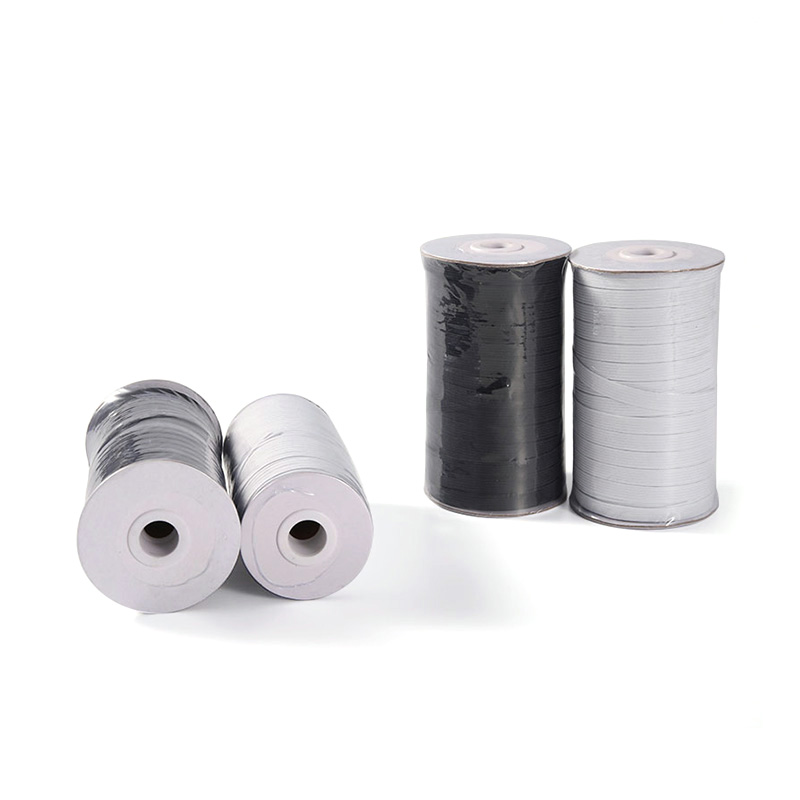Industry
 By Admin
By Admin
Avoiding Common Mistakes When Sewing With Elastic
Sewing with elastic can add both function and style to your projects, whether you're working on clothing, accessories, or fitness gear. However, it's not uncommon for beginners and even experienced sewers to run into challenges when handling elastic materials. One of the keys to success is understanding the characteristics of the elastic you're working with, such as wide elastic band or elastic for straps, and knowing how to work with them properly to avoid common mistakes. In this article, we'll explore practical tips to help you sew elastic smoothly and get the results you want, whether you're making a waistband, a bag strap, or a pilates yoga stretch resistance band.

Choosing the right type of elastic for your project is essential. For example, a wide elastic band is often used in waistbands and belts because it provides firm support and coverage. On the other hand, elastic for straps tends to be narrower and more flexible, making it ideal for bag handles or garment straps. When working with pilates yoga stretch resistance bands, you are dealing with a material designed to stretch and withstand tension, which requires special care during sewing to maintain its elasticity and strength.
A common mistake when sewing with a wide elastic band is stretching it too much during stitching. While it's important to stretch elastic slightly to fit the fabric, overstretching can cause the elastic to lose its shape or cause puckering in the fabric. To avoid this, try to maintain even tension as you sew, stretching the elastic only as much as needed. Using a walking foot or a stretch needle on your sewing machine can also help manage the elastic and fabric layers more effectively.
Another frequent issue arises when people use the wrong stitch type or length. For elastic for straps and wide elastic band projects, a stretch stitch or a zigzag stitch is usually recommended because these stitches can accommodate the stretchiness without breaking. Using a straight stitch can result in broken threads when the elastic stretches during use. For pilates yoga stretch resistance bands, the elasticity is significant, so choosing a stitch with good recovery is critical. Adjusting the stitch length to be slightly longer also helps reduce thread breakage.
Pinning elastic incorrectly is another common problem. Many sewists pin the elastic in place before sewing, but if the pins are placed perpendicular to the sewing line or if the elastic is stretched unevenly, the final result may be uneven or bunched up. Instead, use clips or baste the elastic in place lightly with long stitches before final sewing. When working with a wide elastic band, it's easier to distribute the stretch evenly and avoid bunching if you divide both the elastic and fabric into equal sections before attaching.
Seam allowance is also a detail that can cause trouble when sewing elastic. Some might forget to leave enough seam allowance, especially when working with elastic for straps, which may advance to weak seams or difficulty finishing edges cleanly. Make sure to measure and mark your seam allowances carefully, taking into account the thickness of the elastic and the fabric layers. For pilates yoga stretch resistance bands, it's important to secure the ends properly to prevent fraying or slippage during use.
Finishing techniques play an important role in the durability of elastic projects. For instance, if you're sewing a wide elastic band into a waistband, folding the fabric over the elastic and stitching it down neatly helps protect the elastic and gives a professional look. When working with elastic for straps, consider reinforcing stress points with backstitching or bartacks to extend the life of your item. Pilates yoga stretch resistance bands often benefit from heat sealing or edge binding to maintain integrity and prevent fraying.
Finally, testing your elastic before starting the full project can save a lot of frustration. Try sewing a small sample piece with the elastic and fabric you plan to use, testing how the materials behave when stretched and sewn together. This way, you can adjust your machine settings, stitch type, and tension to suit the specific elastic. Practicing on samples also helps you get a feel for handling different elastic types, whether it's a wide elastic band, elastic for straps, or a pilates yoga stretch resistance band.



 English
English Español
Español عربى
عربى Tiếng Việt
Tiếng Việt

